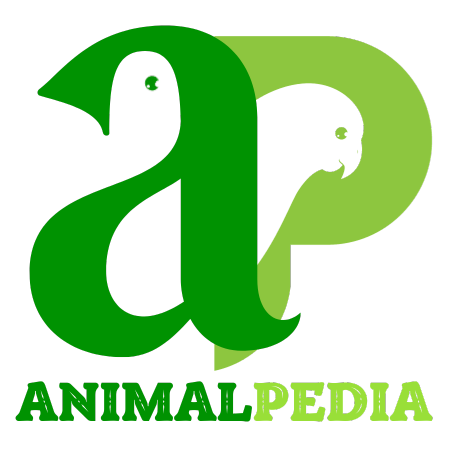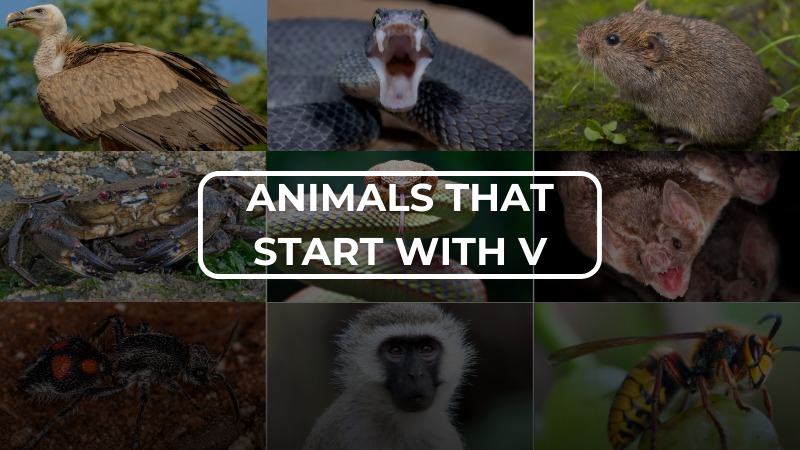Most Popular Animals Start With V
The animal kingdom is full of wonders, offering countless unique and captivating species. Today, we’ll explore animals starting with the letter ‘V.’ From the majestic Vulture to the vibrant Velvetfish, these creatures highlight the incredible diversity of life. Whether you’re a wildlife enthusiast, a student, or just curious, this list of animals beginning with ‘V’ is sure to inspire awe and deepen your love for nature’s marvels!
| Vampire Crab | Viviparous lizards | Volcano rabbit |
| Vine Snake | Vole | Vervet Monkey |
| Vampire Bat | Velvet worms | Vaquita porpoises |
| Vulture |
1. Vampire Crab
The Vampire Crab (Geosesarma spp.), a small semi-terrestrial crustacean in the Sesarmidae family, is native to freshwater streams, riverbanks, and forested areas in Southeast Asia, including Indonesia and the Philippines. With a carapace width of 1–2 inches (2.5–5 centimeters) and weighing under 0.1 ounces (3 grams), these crabs thrive in warm, humid tropical climates, moving between land and water for feeding and shelter.
Renowned for their striking appearance, Vampire Crabs feature purple or black carapaces, vivid yellow or orange eyes, and sometimes red claws or patterned bodies. Omnivorous, they feed on insects, algae, plant material, and small invertebrates, foraging both on land and underwater. Social by nature, they live in small groups, often in shared crevices or streams. Females carry fertilized eggs until hatching, with young crabs emerging fully formed and independent.
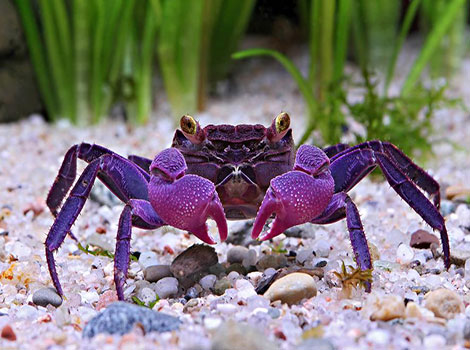
| Attributes | Quick facts |
|---|---|
| Size | 1–2 in (2.5–5 cm) carapace width |
| Weight | Less than 0.1 oz (under 3 g) |
| Lifespan | 2–3 years |
| Habitat | Freshwater streams and forested areas in Southeast Asia |
| Diet | Omnivorous; feeds on insects, plant matter, and small invertebrates |
| Social Structure | Lives in small groups |
| Conservation | Data Deficient |
Fun Fact: Despite their eerie name, Vampire Crabs are harmless and cherished in the aquarium trade for their vivid colors and “vampire-like” gaze!
2. Viviparous lizards
The Viviparous Lizard (Zootoca vivipara), a member of the Lacertidae family, is a small reptile found across Europe and Asia, including northern regions with cool climates. Measuring 4–6 inches (10–15 centimeters) in length, including the tail, and weighing 0.1–0.3 ounces (3–8 grams), this adaptable lizard thrives in grasslands, forests, and wetlands. It is uniquely suited to temperate and subarctic climates, hibernating during winter in burrows or under debris.
With a slender body, smooth, shiny scales, and a brown or grayish coloration with darker stripes or spots, the Viviparous Lizard is well-camouflaged. It actively hunts during the day, feeding on insects, spiders, and small invertebrates. Solitary and diurnal, it spends time basking in the sun to regulate its body temperature. Most populations are viviparous, giving birth to 4–10 live young, though some lay eggs. The young are independent from birth.
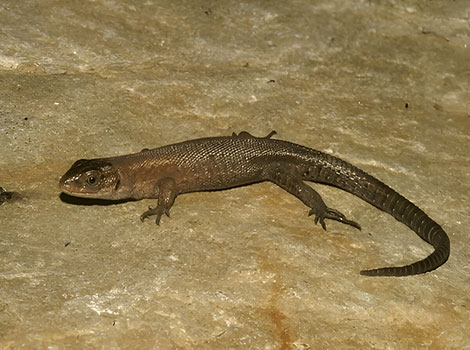
| Attributes | Quick facts |
|---|---|
| Size | 4–6 in (10–15 cm) including tail |
| Weight | 0.1–0.3 oz (3–8 g) |
| Lifespan | 5–10 years |
| Habitat | Grasslands, forests, and wetlands across Europe and Asia; prefers cool climates |
| Diet | Insects, spiders, and small invertebrates |
| Social Structure | Solitary |
| Conservation | Least Concern |
Fun Fact: The Viviparous Lizard’s live-bearing ability allows it to inhabit regions as far north as the Arctic Circle, making it the only reptile to survive such extreme climates!
3. Volcano rabbit
The Volcano Rabbit (Romerolagus diazi), one of the smallest and most ancient rabbit species, belongs to the Leporidae family. Measuring 10–12 inches (25–30 centimeters) in length and weighing 1–1.3 pounds (0.5–0.6 kilograms), it inhabits the volcanic slopes and pine forests of central Mexico, thriving at high altitudes of 2,800–4,250 meters. Preferring cool, temperate climates, this rabbit remains within a small home range.
Its brownish-gray fur offers excellent camouflage in dense zacaton grasses. With a small, rounded body and short ears adapted to conserve heat, the Volcano Rabbit grazes near burrows on grasses and vegetation, often in small family groups. Crepuscular in nature, it is most active during dawn and dusk, spending the day hidden in burrows. Breeding year-round, females give birth to 2–4 kits in grass nests after a 40-day gestation.
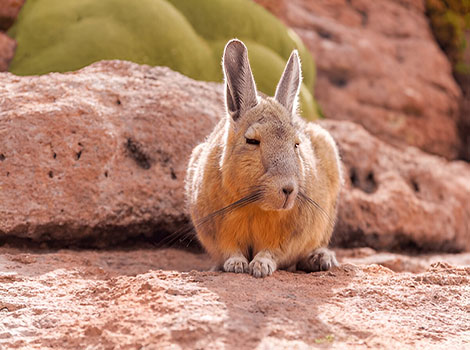 A Viscacha (Lagidium species) perched on a rocky outcrop in the South American highlands, resembling a rabbit with a bushy tail.
A Viscacha (Lagidium species) perched on a rocky outcrop in the South American highlands, resembling a rabbit with a bushy tail.| Attributes | Quick facts |
|---|---|
| Size | 4–6 in (10–15 cm) including tail |
| Weight | 0.1–0.3 oz (3–8 g) |
| Lifespan | 5–10 years |
| Habitat | Grasslands, forests, and wetlands across Europe and Asia; prefers cool climates |
| Diet | Insects, spiders, and small invertebrates |
| Social Structure | Solitary |
| Conservation | Least Concern |
Fun Fact: Locally called the “zacatuche,” the Volcano Rabbit has lived for millions of years in Mexico’s volcanic landscapes but is now endangered due to habitat loss and fragmentation.
4. Vine Snake
The Vine Snake (Ahaetulla spp. and Thelotornis spp., depending on region) is a slender, tree-dwelling snake in the Colubridae family, found in forests, shrubs, and grasslands across South and Southeast Asia, Africa, and Central America. Measuring 3–6 feet (90–180 centimeters) in length and weighing 1–2 pounds (0.5–1 kilogram), it thrives in warm, humid tropical and subtropical climates. Non-migratory, these snakes remain within specific territories for hunting and shelter.
With green, brown, or yellow coloration and a narrow, elongated body that mimics vines, the Vine Snake is perfectly camouflaged in dense vegetation. Its keen, binocular vision enables it to hunt small birds, lizards, frogs, and insects with precision. A diurnal and solitary predator, it relies on ambush tactics, remaining still before striking rapidly at its prey. Depending on the species, Vine Snakes may lay eggs (oviparous) or give live birth (ovoviviparous), with young fully independent at birth.
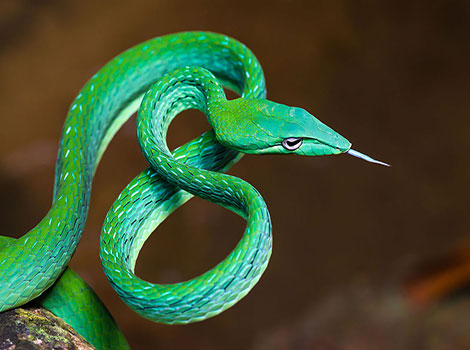
| Attributes | Quick facts |
|---|---|
| Size | 3–6 ft (90–180 cm) |
| Weight | Approximately 1–2 lbs (0.5–1 kg) |
| Lifespan | 10–15 years |
| Habitat | Forests, shrubs, and grasslands in South and Southeast Asia, Africa, and Central America (varies by species) |
| Diet | Small birds, lizards, frogs, and insects |
| Social Structure | Solitary |
| Conservation | Least Concern |
Fun Fact: Vine snakes are masters of disguise, using their vine-like appearance and stillness to blend seamlessly into their surroundings and ambush prey with exceptional precision!
5. Vole
Voles (Microtus spp., Arvicola spp., and others), small rodents in the Cricetidae family, are found in grasslands, forests, and wetlands across North America, Europe, and Asia. Measuring 4–8 inches (10–20 centimeters) in length and weighing 0.5–2 ounces (14–57 grams), they thrive in temperate climates and establish burrows or nests in their habitats. Adaptable to meadows, forests, and alpine regions, voles are non-migratory.
With brown, gray, or black fur and a compact body, voles are well-camouflaged for their environment. They feature continuously growing incisors for gnawing tough vegetation and forage for grasses, seeds, roots, and bark, often digging to access tubers. Solitary by nature, they may form loose colonies in resource-rich areas. Voles are primarily crepuscular, active during dawn and dusk, and breed frequently, producing 3–10 offspring per litter. Young voles grow rapidly, becoming independent in just 3–4 weeks.
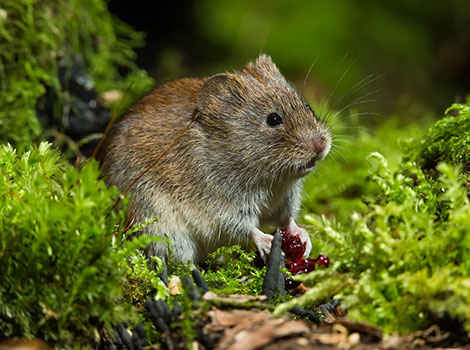
| Attributes | Quick facts |
|---|---|
| Size | 4–8 in (10–20 cm), depending on species |
| Weight | 0.5–2 oz (14–57 g) |
| Lifespan | 3–6 months in the wild; up to 2 years in captivity |
| Habitat | Grasslands, forests, and wetlands across North America, Europe, and Asia |
| Diet | Herbivorous; grasses, seeds, roots, and bark |
| Social Structure | Solitary, but may form loose colonies |
| Conservation | Least Concern |
Fun Fact: Voles are essential to ecosystems, serving as a primary food source for predators like birds of prey, foxes, and snakes, making them vital links in the food web!
6. Vervet Monkey
The Vervet Monkey (Chlorocebus pygerythrus), a slender and agile primate in the Cercopithecidae family, is native to savannas, woodlands, and riverine forests throughout sub-Saharan Africa. Measuring 16–20 inches (40–50 centimeters) in body length and 20–28 inches (50–70 centimeters) in tail length, they weigh between 7–17 pounds (3–8 kilograms). Vervet Monkeys thrive in warm, tropical, and subtropical climates near water sources and are non-migratory, traveling locally for food and water.
With grayish-green fur, a white underside, and a black face framed by white tufts, Vervet Monkeys are easily recognizable. Their long prehensile tails aid in balance and communication. Omnivorous, they feed on fruits, leaves, seeds, flowers, insects, and occasionally small animals, often foraging on the ground or in trees. Highly social, they live in troops of 10–50 individuals with complex hierarchies, spending their days foraging, grooming, and playing. Females typically give birth to one infant during the wet season, and young are cared for by their mothers and other troop members.
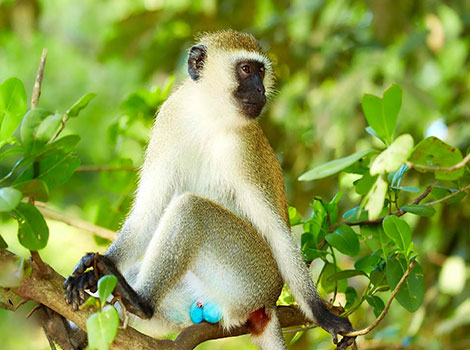
| Attributes | Quick facts |
|---|---|
| Size | 16–20 in (40–50 cm) body; tail 20–28 in (50–70 cm) |
| Weight | 7–17 lbs (3–8 kg) |
| Lifespan | 12–24 years |
| Habitat | Savannas, woodlands, and riverine forests in sub-Saharan Africa |
| Diet | Fruits, leaves, seeds, insects, and small animals |
| Social Structure | Lives in troops of 10–50 individuals |
| Conservation | Least Concern |
Fun Fact: Vervet Monkeys use an advanced system of vocalizations to warn their troop of specific predators, such as distinct calls for snakes, eagles, and leopards!
7. Vampire Bat
The Vampire Bat (Desmodus rotundus and related species) is a small leaf-nosed bat in the Phyllostomidae family. Found in tropical and subtropical regions of Central and South America, these bats inhabit forests, savannas, and caves, thriving in warm, humid climates. Measuring 2.8–3.5 inches (7–9 centimeters) in body length, with a wingspan of 7–8 inches (18–20 centimeters), they weigh 1–2 ounces (28–57 grams). Non-migratory, they may relocate to find stable food sources.
Vampire Bats are adapted for hematophagy (blood-feeding), with sharp incisors for making precise cuts, grooved tongues for lapping blood, and heat-sensitive pits to detect blood vessels. Feeding stealthily on mammals or birds, their saliva contains anticoagulants to prevent blood clotting. They are nocturnal and roost in colonies of 20–100 individuals, showing strong social bonds and even sharing food with colony members that failed to feed.
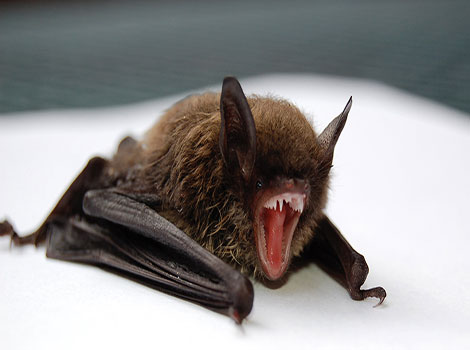
| Attributes | Quick facts |
|---|---|
| Size | 2.8–3.5 in (7–9 cm) body; wingspan 7–8 in (18–20 cm) |
| Weight | 1–2 oz (28–57 g) |
| Lifespan | 9–12 years in the wild; up to 20 years in captivity |
| Habitat | Tropical and subtropical regions in Central and South America |
| Diet | Exclusively blood from mammals or birds (hematophagy) |
| Social Structure | Lives in colonies of 20–100 individuals, with strong social bonds |
| Conservation | Least Concern |
Fun Fact: Vampire bats not only help regulate prey populations but also contribute to medical advancements; their anticoagulant saliva is being studied for therapeutic applications, including stroke treatments!
8. Velvet worms
Velvet Worms (Onychophora), ancient invertebrates in their own phylum, are soft-bodied and segmented creatures found in moist leaf litter, rotting logs, and soil of tropical and temperate forests. Ranging from 0.2–8 inches (5–200 millimeters) in length and weighing less than 1 ounce (30 grams), these creatures thrive in humid environments across Central and South America, Australia, Asia, and Africa. Non-migratory, they stay within their local habitat to avoid desiccation.
With soft, worm-like bodies and stubby, unsegmented legs tipped with tiny claws, Velvet Worms are colorful, varying from browns and greens to vibrant oranges or reds. Equipped with slime glands near their head, they eject adhesive mucus to trap prey, which is then subdued with a paralyzing bite from their retractable jaws. Nocturnal and mostly solitary, they emerge at night to hunt small invertebrates like insects and worms. Their reproduction methods vary, including laying eggs (oviparous), retaining eggs until hatching (ovoviviparous), or giving birth to live young (viviparous), all without parental care.
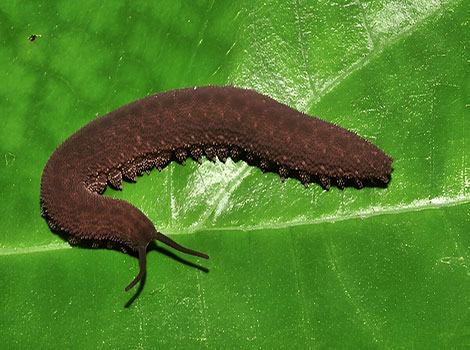
| Attributes | Quick facts |
|---|---|
| Size | 0.2–8 in (5–200 mm), depending on species |
| Weight | Less than 1 oz (under 30 g) |
| Lifespan | 1–6 years |
| Habitat | Moist leaf litter, logs, and soil in tropical and temperate forests worldwide |
| Diet | Carnivorous; feeds on small invertebrates such as insects and worms |
| Social Structure | Solitary, though some species exhibit basic social behavior |
| Conservation | Endangered |
Fun Fact: Velvet Worms are evolutionary “living fossils,” virtually unchanged for over 500 million years, providing key insights into the transition from marine to terrestrial life!
9. Vaquita porpoises
The Vaquita Porpoise (Phocoena sinus), the world’s smallest and most endangered marine mammal, belongs to the Phocoenidae family. Measuring 4–5 feet (1.2–1.5 meters) in length and weighing 65–120 pounds (30–55 kilograms), it inhabits the shallow, coastal waters of the northern Gulf of California, Mexico. Preferring warm, subtropical waters with soft sediment bottoms, Vaquitas are non-migratory, staying within a limited range year-round.
Characterized by their gray bodies, pale undersides, and distinctive black eye circles and lip patches, Vaquitas have a rounded head and a tall, triangular dorsal fin for agility in shallow waters. Carnivorous, they feed on small fish, squid, and crustaceans, likely using echolocation to forage near the sea floor. Shy and elusive, Vaquitas are often seen in small groups of 2–3. Females give birth to a single calf every two years, typically in spring, and nurse their young for several months.
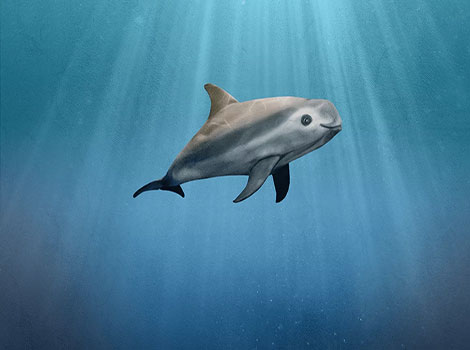
| Attributes | Quick facts |
|---|---|
| Size | 4–5 ft (1.2–1.5 m) |
| Weight | 65–120 lbs (30–55 kg) |
| Lifespan | 20–25 years (estimated) |
| Habitat | Shallow coastal waters of the northern Gulf of California, Mexico |
| Diet | Fish, squid, and crustaceans |
| Social Structure | Small groups of 2–3 individuals |
| Conservation | Critically Endangered |
Fun Fact: Often called the “panda of the sea” due to their unique markings and critically low population, fewer than 20 Vaquitas remain, with illegal gillnet fishing posing the greatest threat to their survival.
10. Vulture
Vultures, spanning Old World species (Gyps spp., Necrosyrtes monachus) in the Accipitridae family and New World species (Cathartes aura, Coragyps atratus) in Cathartidae, are nature’s cleanup crew. These large birds, with wingspans of 5–10 feet (1.5–3 meters) and weights ranging from 2–30 pounds (1–14 kilograms), inhabit diverse habitats worldwide, except in Australia and Antarctica. Some species migrate seasonally, like the Turkey Vulture, while others are sedentary.
Their plumage varies from black to white, and their featherless heads and necks prevent bacterial buildup when feeding on carrion. Equipped with hooked beaks and keen senses (New World vultures have an exceptional sense of smell), vultures locate carcasses and efficiently tear flesh. Diurnal by nature, they soar on thermals to conserve energy. Breeding on cliffs, trees, or the ground, parents regurgitate food to feed their chicks, which fledge after weeks of care.
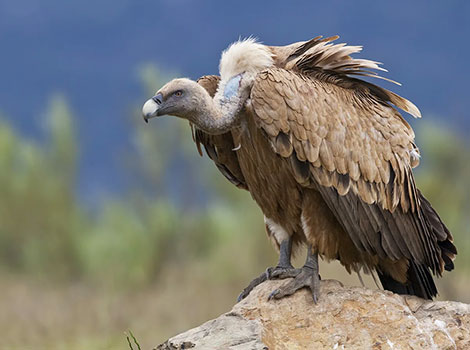
| Attributes | Quick facts |
|---|---|
| Size | 24–48 in (60–120 cm) body; wingspan 5–10 ft (1.5–3 m), depending on species |
| Weight | 2–30 lbs (1–14 kg), varies by species |
| Lifespan | 10–50 years, depending on species |
| Habitat | Open plains, deserts, and forests worldwide, except Australia and Antarctica |
| Diet | Carnivorous; scavenges on carrion |
| Social Structure | Solitary or in groups, depending on food availability |
| Conservation | Critically Endangered |
Fun Fact: By consuming animal carcasses, vultures curb the spread of diseases, making them essential to ecosystem health. However, many species face endangerment due to poisoning and habitat loss.
Mammals that start with V
Mammals starting with ‘V’ include some remarkable species, such as the vampire bat and the vervet monkey, known for their unique adaptations and captivating behaviors in the wild.
| Vicuña | Variegated Squirrel | Vancouver Island Marmot |
| Vaquita |
11. Vicuña
The Vicuña (Vicugna vicugna), a graceful member of the Camelidae family, thrives in the high-altitude grasslands of the Andes Mountains at elevations of 11,500–16,000 feet (3,500–4,800 meters). Measuring 5–5.7 feet (1.5–1.7 meters) in length and weighing 77–120 pounds (35–55 kilograms), it is adapted to the cold, arid environments of the Andean highlands. Non-migratory, Vicuñas move locally in search of fresh grazing areas.
With a slender body, long neck, and light brown fur that transitions to white on its underside, the Vicuña is known for producing some of the world’s finest wool, valued for its softness and warmth. Herbivorous, it grazes on tough grasses and low-growing plants during the day. Socially, Vicuñas live in family groups led by a dominant male or in bachelor groups. Females give birth annually to a single cria after an 11-month gestation, and mothers nurse their young while the dominant male protects the group.
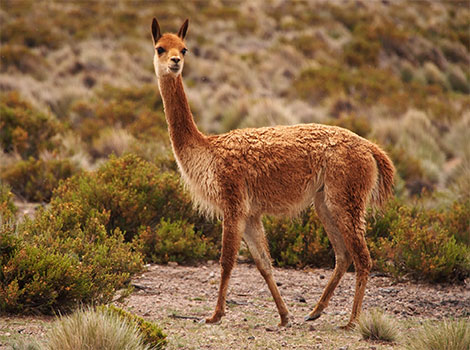
| Attributes | Quick facts |
|---|---|
| Size | 5–5.7 ft (1.5–1.7 m) length; 2.6–3.2 ft (80–100 cm) shoulder height |
| Weight | 77–120 lbs (35–55 kg) |
| Lifespan | 15–20 years |
| Habitat | High-altitude grasslands and plains in the Andes Mountains of South America |
| Diet | Grasses and low-growing plants |
| Social Structure | Lives in family groups consisting of one dominant male and several females with their young |
| Conservation | Least Concern |
Fun Fact: Vicuña wool, once reserved for Incan royalty, remains one of the most luxurious natural fibers, and conservation efforts have helped recover its population from near extinction to protected status today.
12. Variegated Squirrel
The Variegated Squirrel (Sciurus variegatoides), a medium-sized tree squirrel in the Sciuridae family, inhabits forests and woodlands across Central America and northern South America. With a body length of 9–13 inches (23–33 centimeters) and a tail measuring 10–14 inches (25–35 centimeters), it weighs 0.9–2 pounds (400–900 grams). Adaptable to warm, humid climates, it also thrives in drier environments and maintains a well-defined home range.
Known for its highly variable fur patterns, this squirrel’s colors range from gray, brown, and reddish tones to striking black and white combinations, often with a lighter underbelly. Its bushy tail aids in climbing and social signaling. Omnivorous, it feeds on fruits, nuts, seeds, and insects, foraging in trees and on the ground while storing food for later. Diurnal and typically solitary, it breeds 1–2 times a year, with females raising 2–4 young in tree nests until they are weaned at 8–10 weeks.
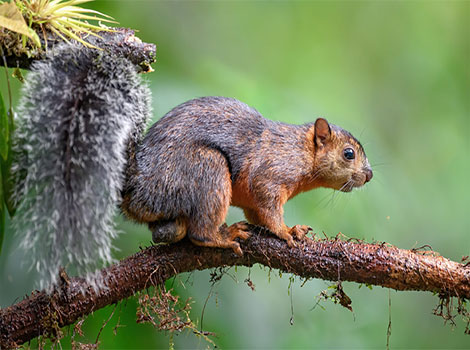
| Attributes | Quick facts |
|---|---|
| Size | 9–13 in (23–33 cm) body; tail 10–14 in (25–35 cm) |
| Weight | 0.9–2 lbs (400–900 g) |
| Lifespan | 5–7 years in the wild; up to 10 years in captivity |
| Habitat | Forests and woodlands in Central America and northern South America |
| Diet | Fruits, nuts, seeds, and occasionally insects |
| Social Structure | Solitary or small family groups |
| Conservation | Least Concern |
Fun Fact: The Variegated Squirrel’s unique and diverse fur patterns vary widely across its range, making it one of the most visually striking tree squirrels!
13. Vancouver Island Marmot
The Vancouver Island Marmot (Marmota vancouverensis), one of the rarest mammals on Earth, belongs to the Sciuridae family. Endemic to Vancouver Island in British Columbia, Canada, it inhabits alpine meadows and subalpine clearings, thriving in cool, temperate mountain climates. Measuring 22–30 inches (56–76 centimeters) in length and weighing 11–17 pounds (5–7.5 kilograms), this stocky marmot is known for its rich chocolate-brown fur with white patches on the nose, chin, and chest.
Living in colonies, these marmots share complex burrow systems. They graze on grasses, herbs, and wildflowers near burrow entrances, primarily in summer, to build fat reserves for winter hibernation. Diurnal by nature, they spend summer days foraging, sunbathing, and socializing. Breeding occurs in spring, with females raising 3–4 pups in burrows until they are ready to forage. Critically endangered, fewer than 200 individuals remain due to habitat loss and predation, but conservation efforts, including captive breeding and reintroduction, are helping their recovery.
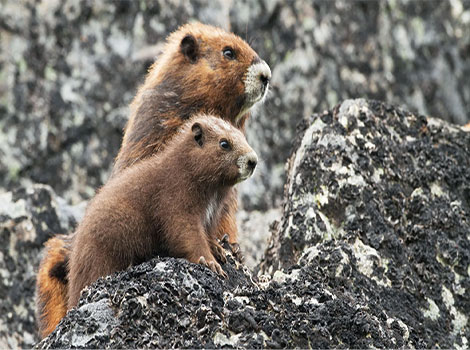
| Attributes | Quick facts |
|---|---|
| Size | 22–30 in (56–76 cm) |
| Weight | 11–17 lbs (5–7.5 kg) |
| Lifespan | 5–10 years in the wild; up to 14 years in captivity |
| Habitat | Alpine meadows and subalpine clearings on Vancouver Island, Canada |
| Diet | Grasses, herbs, and flowers |
| Social Structure | Lives in colonies with complex burrow systems |
| Conservation | Critically Endangered |
Fun Fact: The Vancouver Island Marmot, uniquely adapted to its high-altitude home, has become a symbol of conservation success in Canada as efforts to save this remarkable species continue.
14. Vaquita
The Vaquita (Phocoena sinus), the most endangered marine mammal, is a small porpoise endemic to the northern Gulf of California, Mexico. Measuring 4–5 feet (1.2–1.5 meters) in length and weighing 65–120 pounds (30–55 kilograms), it thrives in warm, shallow subtropical waters. Non-migratory, it lives within a restricted range throughout its life.
This elusive porpoise is known for its gray body, lighter underside, and distinctive dark eye patches and lip markings. It has a small, robust body with a tall, triangular dorsal fin, aiding maneuverability in shallow waters. A carnivore, the Vaquita feeds on small fish, squid, and crustaceans, likely using echolocation to forage near the sea floor. Typically seen in small groups of 2–3, it avoids disturbances, spending its days foraging and socializing. Females give birth to a single calf every two years, nursing them for several months to ensure survival.
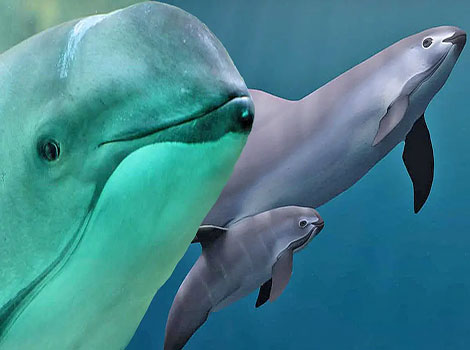
| Attributes | Quick facts |
|---|---|
| Size | 4–5 ft (1.2–1.5 m) |
| Weight | 65–120 lbs (30–55 kg) |
| Lifespan | 20–25 years (estimated) |
| Habitat | Shallow coastal waters of the northern Gulf of California, Mexico |
| Diet | Small fish, squid, and crustaceans |
| Social Structure | Small groups of 2–3 individuals |
| Conservation | Critically Endangered |
Fun Fact: Dubbed the “panda of the sea” for its unique facial markings, the Vaquita faces imminent extinction, with fewer than 20 individuals remaining due to bycatch in illegal gillnets. Conservation efforts are critical to its survival.
Having explored mammals starting with ‘V,’ we now turn to reptiles. These cold-blooded creatures display extraordinary resilience and survival mechanisms across various habitats.
Reptiles that start with V
Reptiles like the viper showcase the adaptability and fascinating biology of this group. Their striking features and behaviors make them a vital part of their ecosystems.
| Virgin Islands Dwarf Gecko | Viper | Viper Boa |
15. Virgin Islands Dwarf Gecko
The Virgin Islands Dwarf Gecko (Sphaerodactylus parthenopion), among the world’s smallest reptiles, belongs to the Sphaerodactylidae family. Measuring just 0.6–0.8 inches (1.5–2 centimeters) in length and weighing less than 0.01 ounces (0.3 grams), this tiny gecko inhabits forested areas and rocky habitats in the Virgin Islands. It thrives in warm, humid tropical climates and is non-migratory, residing in localized habitats year-round.
Brown or tan with subtle patterns, the gecko’s camouflage helps it blend into leaf litter and rocks. Its large eyes provide excellent low-light vision, and its fragile tail can self-detach to escape predators. A diurnal carnivore, it feeds on small insects and mites, actively foraging during the day. Females lay a single egg in protected crevices, with hatchlings fully independent from birth. Though listed as Data Deficient, habitat destruction and invasive species may threaten its survival.
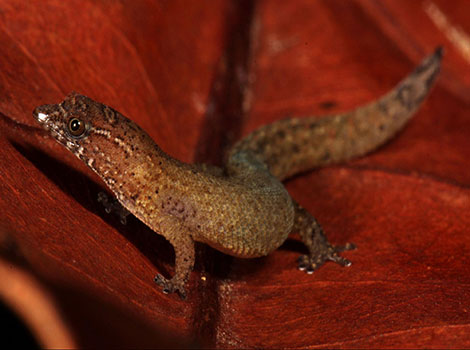
| Attributes | Quick facts |
|---|---|
| Size | 0.6–0.8 in (1.5–2 cm) |
| Weight | Less than 0.01 oz (under 0.3 g) |
| Lifespan | Estimated 5–10 years |
| Habitat | Forested areas and rocky habitats in the Virgin Islands |
| Diet | Small insects and other invertebrates |
| Social Structure | Solitary |
| Conservation | Data Deficient |
Fun Fact: Despite its minuscule size, the Virgin Islands Dwarf Gecko plays a vital ecological role by helping control insect populations in its ecosystem.
16. Viper
Vipers, members of the Viperidae family, are versatile snakes found across forests, grasslands, deserts, and mountains worldwide, excluding Australia and Antarctica. Depending on the species, they range from 12–79 inches (30–200 centimeters) in length and weigh 4 ounces–20 pounds (113 grams–9 kilograms). Adapted to tropical, temperate, and arid climates, vipers are non-migratory but may move locally for food, shelter, or mates.
These thick-bodied snakes are easily recognized by their triangular heads, vertical pupils, and often camouflaging patterns of stripes, spots, or zigzags. Their hollow, retractable fangs inject venom to immobilize prey, while pit vipers possess heat-sensitive organs to detect warm-blooded animals. Carnivorous, vipers ambush small mammals, birds, and reptiles, using venom to subdue them. Solitary by nature, they are diurnal, nocturnal, or crepuscular depending on the species. Reproduction varies; many are ovoviviparous, giving birth to live young, while others lay eggs, with young fully independent from birth.
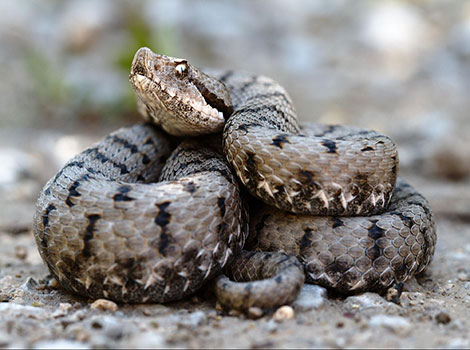
| Attributes | Quick facts |
|---|---|
| Size | 12–79 in (30–200 cm), depending on species |
| Weight | 4 oz–20 lbs (113 g–9 kg), varies by species |
| Lifespan | 10–20 years |
| Habitat | Forests, grasslands, deserts, and mountains worldwide, except Australia and Antarctica |
| Diet | Carnivorous; preys on small mammals, birds, reptiles, and amphibians |
| Social Structure | Solitary |
| Conservation | Least Concern |
Fun Fact: Vipers are among the fastest-striking snakes in the world, capable of delivering a venomous bite in under a second!
17. Viper Boa
The Viper Boa (Candoia aspera), a member of the Boidae family, is a short, thick-bodied snake native to the tropical forests, wetlands, and grasslands of New Guinea and nearby islands. Measuring 2–3 feet (60–90 centimeters) in length and weighing 2–4 pounds (0.9–1.8 kilograms), it thrives in warm, humid climates with dense vegetation and moist conditions. Non-migratory, it remains within localized territories.
Known for its dark brown, reddish, or gray mottled patterns, the Viper Boa is a master of camouflage, blending seamlessly into leaf litter or muddy environments. Its broad, triangular head mimics venomous vipers, serving as a defensive strategy, though it is non-venomous. This nocturnal ambush predator feeds on small mammals, birds, and reptiles, using stealth to strike and constrict prey. Females give birth to live young (5–15 per clutch), and the offspring are independent from birth.
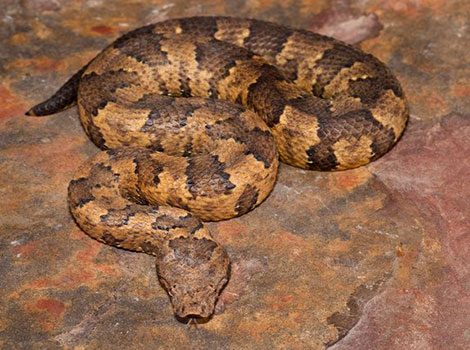
| Attributes | Quick facts |
|---|---|
| Size | 2–3 ft (60–90 cm) |
| Weight | 2–4 lbs (0.9–1.8 kg) |
| Lifespan | 15–20 years |
| Habitat | Tropical forests and wetlands in New Guinea and surrounding islands |
| Diet | Small mammals, birds, and reptiles |
| Social Structure | Solitary |
| Conservation | Least Concern |
Fun Fact: Despite its viper-like appearance, the Viper Boa relies solely on mimicry and constriction, not venom, making it a fascinating example of defensive adaptation in the wild.
From the slithering beauty of reptiles, let’s take flight with birds. This class offers vibrant plumage, melodic calls, and fascinating migratory patterns among species starting with ‘V.’
Birds that start with V
Birds beginning with ‘V,’ such as the vibrant violet-backed starling and voracious vulture, captivate us with their striking appearances and essential ecological roles.
| Valley Quail (California Quail) | Vanga | Violet Sabrewing (Hummingbird) |
| Vermilion Flycatcher | Veery | Violet-Green Swallow |
| Violet Turaco | Variable Oystercatcher | Vanikoro Flycatcher |
18. Valley Quail (California Quail)
The Valley Quail, or California Quail (Callipepla californica), is a compact, round-bodied bird native to western North America. Measuring 9–11 inches (23–28 centimeters) in length and weighing 4.9–8.1 ounces (140–230 grams), it thrives in grasslands, woodlands, scrublands, and foothills. Non-migratory, it adapts well to both dry and temperate climates, staying within a local range year-round.
Males are striking with gray and brown plumage, a black face bordered by white, and a distinctive black topknot plume, while females are duller brown with a smaller plume. Omnivorous, Valley Quails forage on the ground in groups, consuming seeds, grains, leaves, and insects, especially during the breeding season. Social by nature, they live in coveys of up to 200 birds outside the breeding season. Females lay 10–16 eggs in hidden ground nests, with both parents guarding and leading precocial chicks.
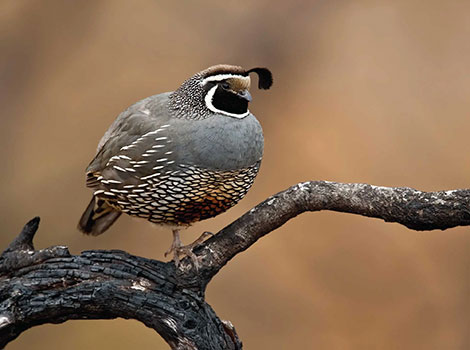
| Attributes | Quick facts |
|---|---|
| Size | 9–11 in (23–28 cm) |
| Weight | 4.9–8.1 oz (140–230 g) |
| Lifespan | 1–4 years in the wild; up to 6 years in captivity |
| Habitat | Grasslands, woodlands, and scrublands in western North America |
| Diet | Seeds, grains, leaves, and insects |
| Social Structure | Lives in coveys (groups) outside of the breeding season |
| Conservation | Least Concern |
Fun Fact: The Valley Quail’s recognizable “chi-ca-go” call helps keep their coveys together while foraging, adding to their charm in the wild!
19. Vanga
Vangas, members of the Vangidae family, are a diverse group of birds endemic to Madagascar. They range in size from 5–12 inches (12–30 centimeters) and weigh 0.5–4 ounces (15–115 grams). Found in forests, scrublands, mangroves, and savannas, Vangas thrive in Madagascar’s tropical and subtropical climates, occupying humid or semi-arid regions.
Their appearance varies widely among species, from simple black-and-white plumage to vibrant blue or green hues. They possess stout, hooked beaks adapted for feeding on insects, small vertebrates, fruits, and seeds. Using techniques such as gleaning, probing, or hawking, these diurnal birds forage actively during the day. Depending on the species, Vangas may live solitarily, in small groups, or within mixed-species flocks. They build cup-shaped nests in trees, with both parents—and sometimes helpers—raising 2–4 chicks per clutch.
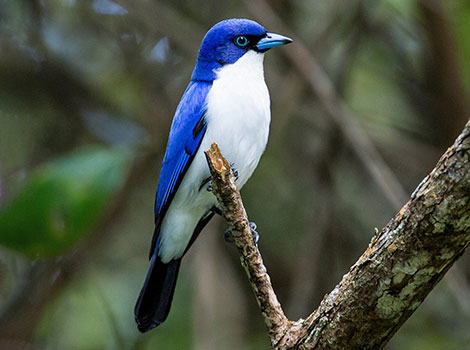
| Attributes | Quick facts |
|---|---|
| Size | 5–12 in (12–30 cm), depending on species |
| Weight | 0.5–4 oz (15–115 g) |
| Lifespan | Estimated 5–10 years |
| Habitat | Forests, scrublands, and mangroves in Madagascar |
| Diet | Insects, small vertebrates, fruits, and seeds |
| Social Structure | Solitary or small groups, depending on species |
| Conservation | Least Concern |
Fun Fact: The remarkable diversity in Vangas’ beak shapes and feeding habits is an example of adaptive radiation, much like Darwin’s finches in the Galápagos Islands!
20. Violet Sabrewing (Hummingbird)
The Violet Sabrewing (Campylopterus hemileucurus) is one of Central America’s largest and most striking hummingbirds, belonging to the Trochilidae family. Measuring 5.9–6.3 inches (15–16 centimeters) in length and weighing 0.2–0.3 ounces (6–10 grams), it inhabits cloud forests and tropical rainforests from southern Mexico to Panama, thriving in warm, humid environments at elevations of 3,000–7,500 feet (900–2,300 meters).
Males display iridescent violet plumage, dark wings, and distinctive white-tipped tail feathers, while females are greenish above with grayish underparts. Their long, slightly curved beaks are specialized for feeding on deep tubular flowers, with nectar supplemented by small insects for protein. These solitary birds aggressively defend feeding territories and spend most of the day hovering near flowers to sustain their high metabolic rates. Females build small nests from moss and spider silk, incubating two eggs and feeding chicks until they fledge.
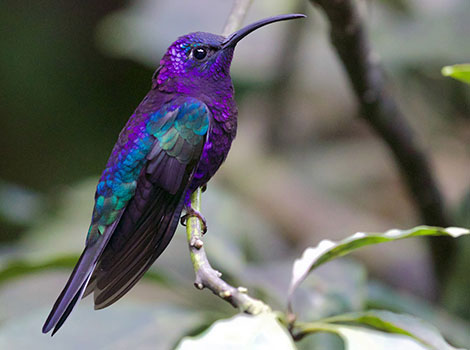
| Attributes | Quick facts |
|---|---|
| Size | 5.9–6.3 in (15–16 cm) |
| Weight | 0.2–0.3 oz (6–10 g) |
| Lifespan | 5–8 years |
| Habitat | Cloud forests and tropical rainforests in Central America |
| Diet | Nectar and small insects |
| Social Structure | Solitary except during mating |
| Conservation | Least Concern |
Fun Fact: The Violet Sabrewing’s shimmering violet feathers make it a dazzling sight in sunlight, underscoring its status as a rainforest jewel!
21. Vermilion Flycatcher
The Vermilion Flycatcher (Pyrocephalus rubinus), a vibrant member of the Tyrannidae family, is a small bird found in open woodlands, grasslands, and scrublands across the Americas, from the southwestern United States to South America. Measuring 5–6 inches (13–15 centimeters) in length and weighing 0.4–0.5 ounces (11–14 grams), it thrives in warm, arid, or semi-arid climates, with some populations migrating seasonally.
Males are known for their striking bright red plumage and contrasting black wings and back, while females exhibit subtler grayish-brown tones with hints of pink or orange. Vermilion Flycatchers hunt flying insects by perching prominently in open spaces and catching prey mid-air in a behavior called “hawking.” During the breeding season, females build cup-shaped nests in trees or shrubs near water, incubating 2–4 eggs and caring for chicks with the help of the male.
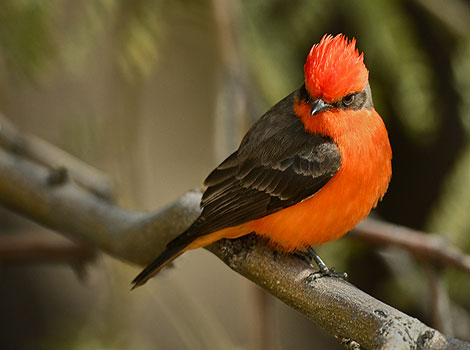
| Attributes | Quick facts |
|---|---|
| Size | 5–6 in (13–15 cm) |
| Weight | 0.4–0.5 oz (11–14 g) |
| Lifespan | 5–8 years |
| Habitat | Open woodlands, grasslands, and scrublands in the Americas |
| Diet | Insects, caught in flight |
| Social Structure | Solitary or in pairs during breeding season |
| Conservation | Least Concern |
Fun Fact: The Vermilion Flycatcher’s dazzling red feathers are created by unique carotenoid structures in their plumage, rather than pigments from their diet—a rare trait among birds!
22. Veery
The Veery (Catharus fuscescens) is a slender, melodic member of the Turdidae family, measuring 6.7–7.1 inches (17–18 centimeters) in length and weighing 1–1.9 ounces (28–54 grams). This bird inhabits deciduous forests, riparian areas, and mixed woodlands across North America during its breeding season, preferring temperate climates. It migrates to lowland tropical forests in South America for the winter.
With warm reddish-brown upperparts and pale underparts adorned with faint brown spots on the throat and chest, the Veery blends seamlessly into forest environments. It forages on the ground, flipping leaves to uncover insects, spiders, and other invertebrates in the breeding season, switching to berries and fruits in the fall. Females build nests on or near the ground, incubating 3–5 eggs. Both parents care for the chicks until they fledge within 10–12 days.
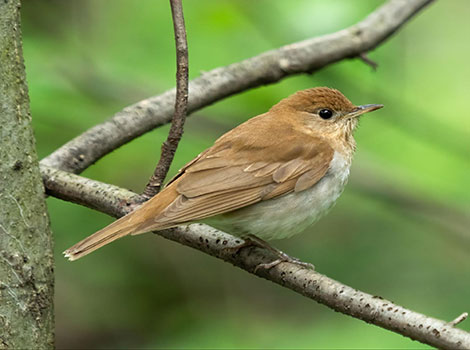
| Attributes | Quick facts |
|---|---|
| Size | 6.7–7.1 in (17–18 cm) |
| Weight | 1–1.9 oz (28–54 g) |
| Lifespan | 5–10 years |
| Habitat | Deciduous forests and riparian areas in North America |
| Diet | Insects, berries, and fruits |
| Social Structure | Solitary or in pairs during breeding season |
| Conservation | Least Concern |
Fun Fact: The Veery’s cascading, flute-like song is so intricate that it has fascinated scientists, who study its role in mate attraction and territory defense!
23. Violet-Green Swallow
The Violet-Green Swallow (Tachycineta thalassina) is a sleek, agile member of the Hirundinidae family, measuring 4.7–5.5 inches (12–14 centimeters) in length and weighing 0.5–0.6 ounces (14–17 grams). It thrives in open woodlands, cliffs, canyons, and urban areas across western North America during the breeding season and migrates to Mexico and Central America in winter.
This swallow is adorned with iridescent green upperparts, a violet rump, and white underparts that extend to the cheeks. Its streamlined body and long, pointed wings enable graceful flight. It feeds exclusively on flying insects, catching prey mid-air with impressive acrobatics.
Nesting occurs in tree cavities, rock crevices, or nest boxes, with females laying 4–6 eggs. Both parents feed the chicks, which fledge 18–24 days after hatching.
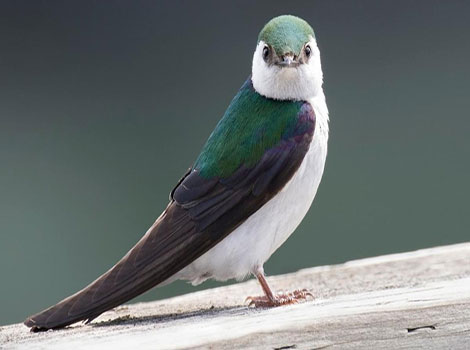
| Attributes | Quick facts |
|---|---|
| Size | 4.7–5.5 in (12–14 cm) |
| Weight | 0.5–0.6 oz (14–17 g) |
| Lifespan | 5–6 years |
| Habitat | Open woodlands, cliffs, and urban areas in western North America |
| Diet | Insects, caught in flight |
| Social Structure | Lives in colonies or small groups |
| Conservation | Least Concern |
Fun Fact: The Violet-Green Swallow’s shimmering plumage and stunning aerial maneuvers make it a standout among North American swallows!
24. Violet Turaco
The Violet Turaco (Musophaga violacea) is a stunning bird from the Musophagidae family, measuring 18–20 inches (45–50 centimeters) in length and weighing 10–12 ounces (280–340 grams). Native to West and Central Africa, it thrives in warm, humid forests, woodlands, and riverine habitats.
Its vivid violet plumage is accentuated by a bright yellow forehead, a striking red crest, and red wing feathers visible during flight. Its yellow beak with a red tip complements its vibrant coloration. The Violet Turaco feeds primarily on fruits, flowers, and leaves, foraging high in the canopy.
Social by nature, these birds live in family groups or small flocks of up to 10 individuals. During the breeding season, both parents construct a tree nest, incubate 2–3 eggs for 20–22 days, and care for their altricial chicks until they fledge.
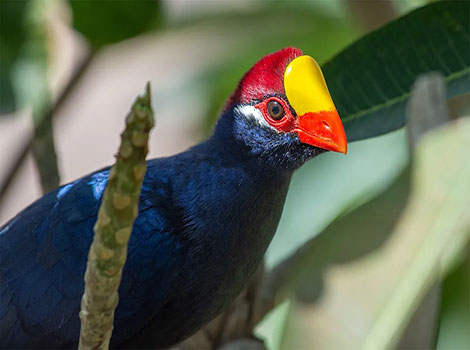
| Attributes | Quick facts |
|---|---|
| Size | 18–20 in (45–50 cm) |
| Weight | 10–12 oz (280–340 g) |
| Lifespan | 10–15 years in the wild; up to 30 years in captivity |
| Habitat | Forests and woodlands in West and Central Africa |
| Diet | Fruits, flowers, and leaves |
| Social Structure | Small family groups or flocks |
| Conservation | Least Concern |
Fun Fact: The Violet Turaco’s remarkable plumage owes its coloration to turacins, unique pigments found only in turacos, making them one of nature’s most colorful wonders!
25. Variable Oystercatcher
The Variable Oystercatcher (Haematopus unicolor) is a medium-sized shorebird from the Haematopodidae family, native to New Zealand’s coastal beaches, estuaries, and rocky shorelines. It measures 18–20 inches (45–50 cm) in length and weighs 1.5–2.3 pounds (700–1,050 grams). This species is named for its variable plumage, ranging from entirely black to a striking combination of black and white. Its bright orange-red bill is strong and pointed, perfectly adapted for opening mollusk shells, while its pinkish legs aid in navigating coastal terrain.
Carnivorous by nature, the Variable Oystercatcher feeds on mollusks, crustaceans, and marine worms, foraging along the shore, especially during low tide. It is generally sedentary but may move locally to optimize food availability and nesting conditions. During the breeding season (September to January), pairs create shallow nests camouflaged with shells and pebbles on sandy or rocky beaches. Both parents share incubation duties over 24–28 days and care for chicks, which fledge after 6–7 weeks but remain dependent for several months.
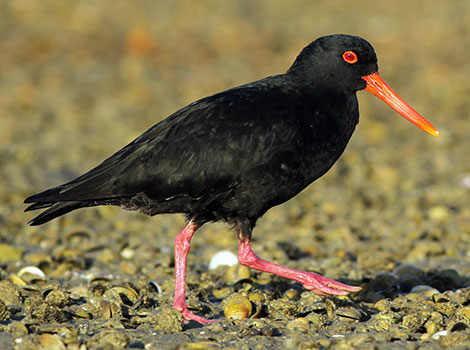
| Attributes | Quick facts |
|---|---|
| Size | 18–20 in (45–50 cm) |
| Weight | 1.5–2.3 lbs (700–1,050 g) |
| Lifespan | 25–30 years |
| Habitat | Coastal beaches, estuaries, and rocky shores in New Zealand |
| Diet | Mollusks, crustaceans, and worms |
| Social Structure | Pairs or small groups |
| Conservation | Least Concern |
Fun Fact: The Variable Oystercatcher’s ability to adapt its diet and feeding techniques to different shoreline habitats highlights its versatility in coastal ecosystems!
26. Vanikoro Flycatcher
The Vanikoro Flycatcher (Myiagra vanikorensis) is a small bird from the Monarchidae family, found in the forests, mangroves, and wooded areas of the Solomon Islands. Measuring 5–6 inches (13–15 cm) in length and weighing 0.4–0.6 ounces (12–18 grams), it thrives in warm, tropical climates with dense vegetation. This bird has dark blue or black glossy upperparts and lighter underparts, often white or pale gray, giving it a striking appearance. Its short, wide beak is perfectly adapted for catching flying insects, which it hunts by “hawking” mid-flight or gleaning from leaves and branches.
The Vanikoro Flycatcher is a diurnal species, active during the day, foraging and perching on branches to scan for prey. Typically solitary, it may form small family groups during the breeding season. It builds small, cup-shaped nests using materials like twigs, moss, and spider silk, where females lay 2–3 eggs. Both parents share responsibilities for incubating the eggs and feeding the chicks until they fledge.
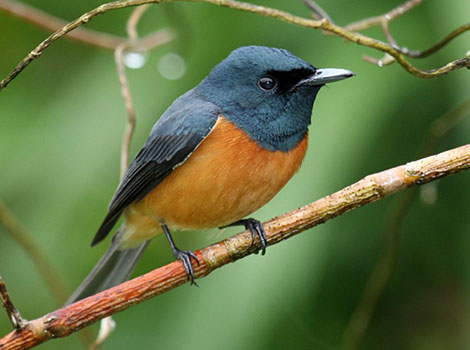
| Attributes | Quick facts |
|---|---|
| Size | 5–6 in (13–15 cm) |
| Weight | 0.4–0.6 oz (12–18 g) |
| Lifespan | Estimated 5–10 years |
| Habitat | Forests and wooded areas in the Solomon Islands |
| Diet | Insects and small invertebrates |
| Social Structure | Solitary or small family groups |
| Conservation | Least Concern |
Fun Fact: Named after Vanikoro Island in the Solomon Islands, this bird is deeply tied to the region’s lush tropical forests, where its glossy plumage glistens beautifully in the sunlight.
Transitioning from birds, we dive into aquatic realms to uncover fish starting with ‘V.’ These creatures provide a glimpse into the incredible variety of life underwater.
Fish that start with V
Fish like the vivid velvetfish and voracious viperfish demonstrate the diversity of marine and freshwater species, each thriving in their unique underwater habitats.
| Viper Shark | Viperfish | Viper Goby (Gnatholepis anjerensis) |
27. Viper Shark
The Viper Shark (Trigonognathus kabeyai) is a deep-sea predator from the Etmopteridae family, measuring 18–24 inches (45–60 cm) in length and weighing about 1–2 pounds (0.5–1 kg). It inhabits tropical and temperate oceans, particularly in the western Pacific, at depths below 1,000 feet (300 meters), thriving in cold, dark, high-pressure environments. This shark is named for its sharp, fang-like teeth, which are so long that it cannot fully close its mouth, creating a permanent “snarling” look. Its dark body features bioluminescent patches along the belly, which may help attract prey or camouflage it against the faint light from above.
The Viper Shark feeds on small fish, squid, and crustaceans, likely using its bioluminescence to lure prey closer before striking with its needle-like teeth. It is a solitary and active species, remaining in the mesopelagic zone, though some vertical movement may occur during hunting. Reproduction is thought to be ovoviviparous, where females give birth to live young that hatch from eggs internally. The young are fully independent at birth, receiving no parental care.
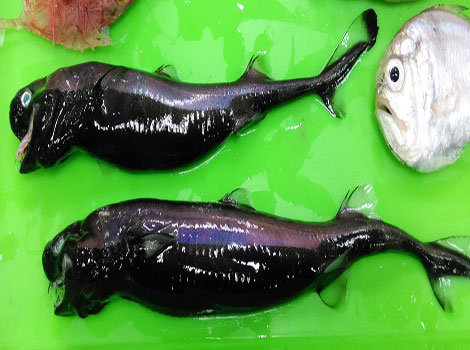
| Attributes | Quick facts |
|---|---|
| Size | 18–24 in (45–60 cm) |
| Weight | Approximately 1–2 lbs (0.5–1 kg) |
| Lifespan | Unknown, likely several decades |
| Habitat | Deep-sea waters, typically below 1,000 ft (300 m) in tropical and temperate oceans |
| Diet | Small fish, squid, and crustaceans |
| Social Structure | Solitary |
| Conservation | Data Deficient |
Fun Fact: The Viper Shark’s striking appearance, with its long, fang-like teeth and glowing underbelly, highlights the adaptations required to survive in the extreme conditions of the deep sea!
28. Viperfish
The Viperfish (Chauliodus sloani and related species) is a fascinating deep-sea predator from the Stomiidae family, measuring 12–24 inches (30–60 cm) in length and weighing about 1–2 pounds (0.5–1 kg). It inhabits the mesopelagic and bathypelagic zones at depths of 2,000–5,000 feet (600–1,500 meters), thriving in cold, high-pressure environments. This solitary fish features a dark, metallic blue or greenish body for camouflage and oversized eyes to detect prey in low light. Its most striking features are its extremely long, curved teeth, which protrude even when its mouth is closed, and photophores along its body and near its head that emit light to lure prey.
The Viperfish is carnivorous, feeding on small fish, crustaceans, and squid. It employs ambush tactics, using its bioluminescent lure to attract prey before striking with its large teeth. Known for diel vertical migration, it ascends to shallower waters at night to hunt and descends during the day to avoid predators. Reproduction occurs externally, with females releasing eggs and males releasing sperm into the water column. Larvae drift as plankton near the surface before maturing and descending to the deep sea. There is no parental care.
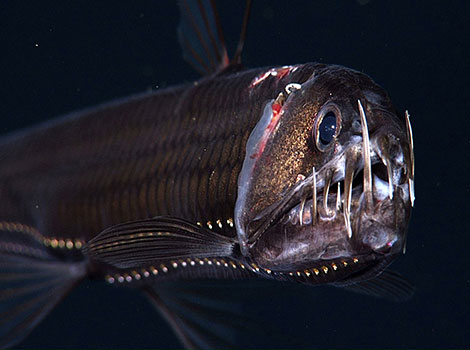
| Attributes | Quick facts |
|---|---|
| Size | 12–24 in (30–60 cm) |
| Weight | Approximately 1–2 lbs (0.5–1 kg) |
| Lifespan | Estimated 15–30 years |
| Habitat | Deep ocean waters worldwide, typically at depths of 2,000–5,000 ft (600–1,500 m) |
| Diet | Small fish and crustaceans |
| Social Structure | Solitary |
| Conservation | Least Concern |
Fun Fact: The Viperfish’s hinged skull allows it to open its jaw wide enough to swallow prey almost half its size, compensating for the limitations of its massive, protruding teeth!
29. Viper Goby (Gnatholepis anjerensis)
The Viper Goby (Gnatholepis anjerensis) is a small member of the Gobiidae family, measuring 2–3 inches (5–7.5 cm) in length and weighing under 0.1 ounces (3 grams). It inhabits shallow coastal waters, coral reefs, and sandy substrates across the Indo-Pacific region, thriving in warm tropical waters. This goby is pale to sandy-colored with subtle stripes or spots, offering excellent camouflage in sandy or coral environments. Its elongated body is equipped with fused pelvic fins that form a suction disc, helping it anchor to surfaces. Large eyes aid in spotting tiny prey and detecting predators.
An omnivore, the Viper Goby feeds on small invertebrates and detritus by foraging in sandy substrates and coral crevices. It is diurnal and typically solitary, though it may form loose groups in areas with abundant resources. Reproduction involves egg-laying in hidden crevices or on sandy bottoms, with males often guarding the eggs until they hatch. The planktonic larvae drift in the water column before settling on the substrate to begin adult life.
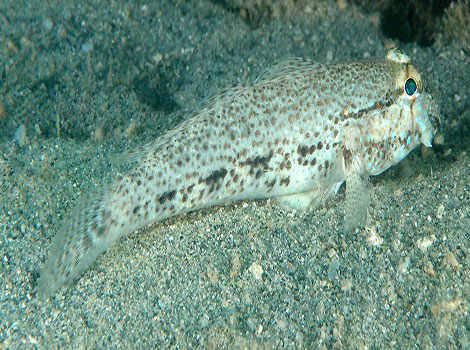
| Attributes | Quick facts |
|---|---|
| Size | 2–3 in (5–7.5 cm) |
| Weight | Less than 0.1 oz (under 3 g) |
| Lifespan | Estimated 1–2 years |
| Habitat | Shallow coastal waters and coral reefs in the Indo-Pacific region |
| Diet | Small invertebrates and detritus |
| Social Structure | Solitary or small groups |
| Conservation | Least Concern |
Fun Fact: Despite their size, gobies like the Viper Goby are vital to coral reef ecosystems, helping regulate invertebrate populations and contributing to nutrient cycling!
After exploring fish, we surface to learn about insects . These dual-life animals starting with ‘V’ bridge the gap between aquatic and terrestrial ecosystems.
Insects that start with V
Insects like the vivid leafhopper and the venomous velvet ant showcase the intriguing diversity and specialized roles of these tiny yet impactful creatures.
| Viceroys (Butterfly) |
30. Viceroys (Butterfly)
The Viceroy Butterfly (Limenitis archippus) is a striking member of the Nymphalidae family, known for its resemblance to the Monarch butterfly. With a wingspan of 2.5–3.3 inches (6.4–8.4 cm) and a weight under 0.3 grams, this medium-sized butterfly inhabits wetlands, meadows, and forests across North America, often near willow and poplar trees. Bright orange wings with black veins and a distinctive horizontal stripe across the hindwings make the Viceroy easily recognizable. Its mimicry of the Monarch butterfly deters predators, who associate its appearance with unpalatability.
The Viceroy’s diet changes throughout its life: caterpillars feed on the leaves of willow, poplar, and cottonwood trees, while adults sip nectar, tree sap, and decaying fruit using their proboscis. Solitary by nature, Viceroys are diurnal and often seen basking, feeding, or searching for mates during the day. Reproduction involves females laying single eggs on host plant leaves. After hatching, caterpillars rely on the host plant for nourishment and protection. Viceroy butterflies do not migrate and remain in their local habitat year-round.
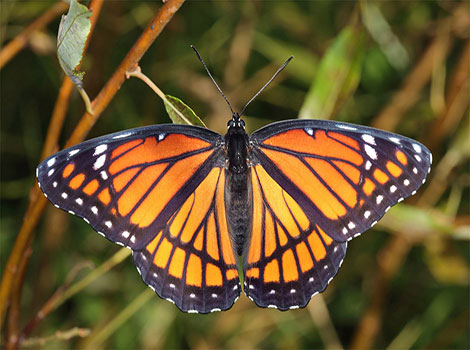
| Attributes | Quick facts |
|---|---|
| Size | Wingspan 2.5–3.3 in (6.4–8.4 cm) |
| Weight | Approximately 0.01 oz (under 0.3 g) |
| Lifespan | 6–10 days (adult stage) |
| Habitat | Wetlands, meadows, and deciduous forests across North America |
| Diet | Adults feed on nectar; caterpillars feed on willow and poplar leaves |
| Social Structure | Solitary |
| Conservation | Least Concern |
Fun Fact: The Viceroy’s mimicry of Monarchs illustrates both Batesian and Müllerian mimicry, as some studies suggest that Viceroys may also be unpalatable to predators!
As we conclude our exploration of insects, let’s widen our scope to discover other fascinating animals starting with ‘V,’ highlighting their unique contributions to biodiversity.
Other animals that start with V
Other animals like the velvet worm and the Venus clam underline the immense variety of life forms starting with ‘V,’ each enriching the tapestry of life on Earth.
| Vinegaroon | Vampire Squid | Volcano Snail |
31. Vinegaroon
The Vinegaroon, a whip scorpion, belongs to the Thelyphonida order. Measuring 2.5–7.5 cm in body length with a whip-like tail adding 2.5–5 cm, it weighs 14–57 grams. Found in arid and tropical regions across the Americas, Asia, and Africa, these creatures thrive in warm, humid to semi-arid climates with ample shelter. With a dark brown to black body, they blend seamlessly into their environment, featuring pincer-like pedipalps and a sensory tail.
Vinegaroons are nocturnal hunters, feeding on insects, spiders, and worms. Solitary by nature, they interact only during mating or while females care for their young. Notably, females lay eggs in burrows, carrying hatchlings on their backs until independent. Despite being categorized as “Least Concern,” habitat disturbances may locally threaten them.
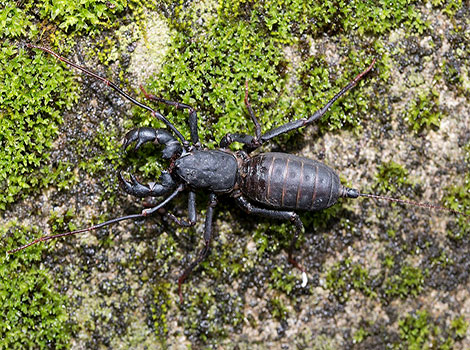
| Attributes | Quick facts |
|---|---|
| Size | 1–3 in (2.5–7.5 cm) body length; tail adds 1–2 in (2.5–5 cm) |
| Weight | 0.5–2 oz (14–57 g) |
| Lifespan | 7–8 years |
| Habitat | Arid and tropical regions; caves, forests, and deserts in the Americas, Asia, and Africa |
| Diet | Carnivorous; insects, spiders, and other small invertebrates |
| Social Structure | Solitary |
| Conservation | Least Concern |
Fun Fact: The Vinegaroon sprays acetic acid, a vinegar-like substance, as a defense, deterring predators while remaining harmless to humans!
32. Vampire Squid
The Vampire Squid (Vampyroteuthis infernalis) is a deep-sea creature known for its gelatinous body, large red eyes, and webbed arms resembling a cape. Found in the oxygen minimum zones of tropical oceans at depths of 2,000–3,000 ft (600–900 m), the Vampire Squid feeds on marine snow, a mixture of organic debris that sinks through the water column. Measuring 4–6 in (10–15 cm) in length and weighing up to 300 grams (0.7 pounds), this species ejects bioluminescent mucus, creating a dazzling light display to deter predators in the pitch-black depths of its habitat.
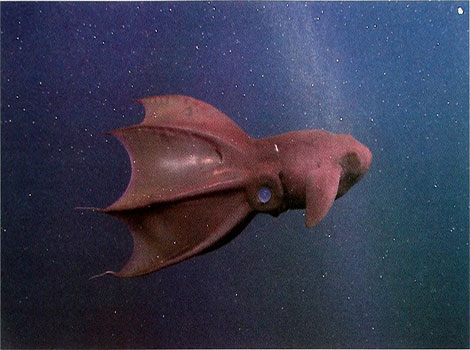
| Attributes | Quick facts |
|---|---|
| Size | 4–6 in (10–15 cm) |
| Weight | 0.6–1.2 oz (15–35 g) |
| Lifespan | Estimated 5–8 years |
| Habitat | Deep ocean waters worldwide, typically at depths of 2,000–3,000 ft (600–900 m) |
| Diet | Marine detritus (plankton, dead organisms, and fecal matter) |
| Social Structure | Solitary |
| Conservation | Least Concern |
Fun Fact: The Vampire Squid possesses a unique defense strategy when threatened that can turn itself inside out, exposing spiky projections called cirri.
33. Volcano Snail
The Volcano Snail (Chrysomallon squamiferum), a deep-sea species discovered near hydrothermal vents, is adapted to some of Earth’s most extreme environments. Measuring approximately 1–1.5 in (2.5–4 cm) in length and weighing less than 1 oz (under 30 g), it thrives at depths of 2,400–2,800 meters (7,900–9,200 feet) in temperatures exceeding 300°C (572°F). Its foot is covered in iron sulfide scales, providing protection, while its shell, reinforced with iron sulfides, offers exceptional durability.
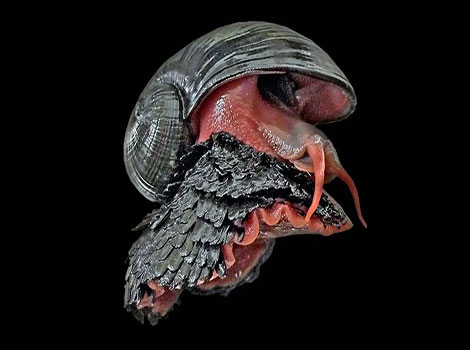
| Attributes | Quick facts |
|---|---|
| Size | 1–1.5 in (2.5–4 cm) |
| Weight | Less than 1 oz (under 30 g) |
| Lifespan | Unknown, likely several years |
| Habitat | Deep-sea hydrothermal vents in the Indian Ocean |
| Diet | Symbiotic bacteria within its body that process chemicals from vent fluids |
| Social Structure | Solitary |
| Conservation | Endangered |
Fun Fact: You can pick up a volcano snail with a magnet.
FAQs
What Zoo Animals Start with V?
Here are the top 5 Zoo Animals that start with V:
- Vicuña (Vicugna vicugna): A mammal, vicuñas are relatives of llamas and alpacas, famous for their fine wool. They have slender bodies with a light brown coat and white underparts. Native to the Andean highlands, they are adapted to harsh, high-altitude environments. Their social structure and grazing habits are notable, living in family-based groups.
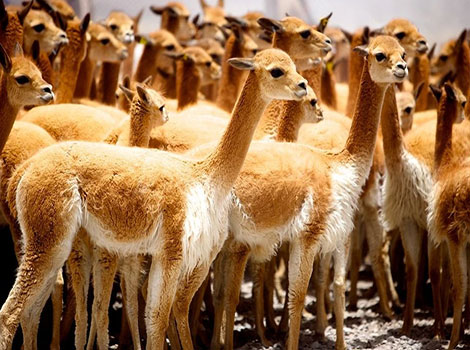
- Vampire Bat (Desmodus rotundus): This mammal, known for its blood-feeding habits, has a wingspan of up to 35 cm and a distinctive leaf-shaped nose. Vampire bats inhabit tropical and subtropical areas of the Americas, particularly favoring forests and caves.
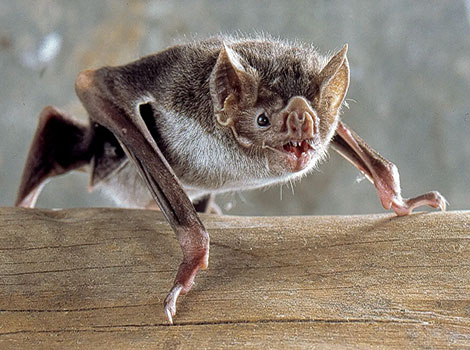
- Vervet Monkey (Chlorocebus pygerythrus): A primate with a distinctive black face and silver-gray body fur. Found across various African habitats, vervet monkeys are highly adaptable, living in both savannas and woodlands.
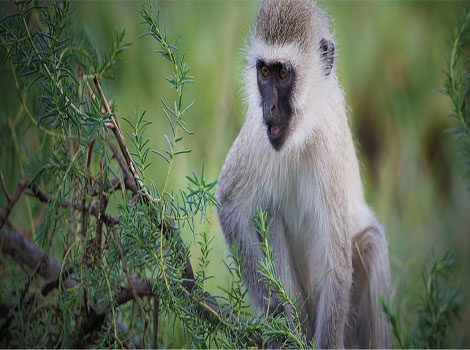
- Vulture (Various Species): Large birds of prey, vultures are characterized by their bald heads and scavenging habits. They inhabit a wide range of habitats globally, from savannas to mountainous regions. Their ecological role in cleaning up carrion and their strong stomach acid are outstanding features.
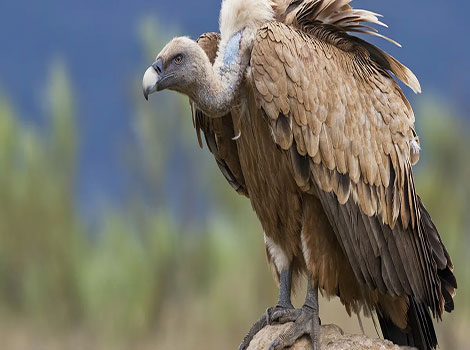
- Vaquita (Phocoena sinus): A small porpoise and mammal, the vaquita is distinguished by dark rings around its eyes and dark patches on its lips. Found exclusively in the northern Gulf of California, it’s critically endangered due to fishing activities.
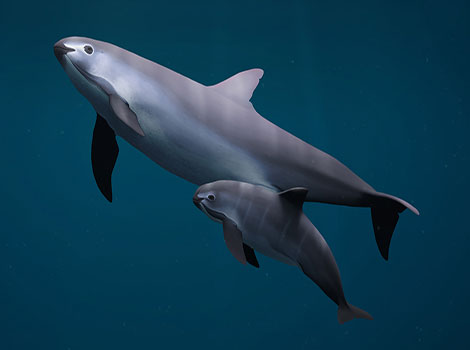
What Primates Start with V?
Here are the top 5 Primates that start with V:
- Variegated Lemur (Varecia variegata): Known also as the red ruffed lemur, this primate is native to Madagascar. It has a distinctive appearance with a black and white or red coat. They are arboreal, spending most of their time in trees and are known for their loud, raucous calls.
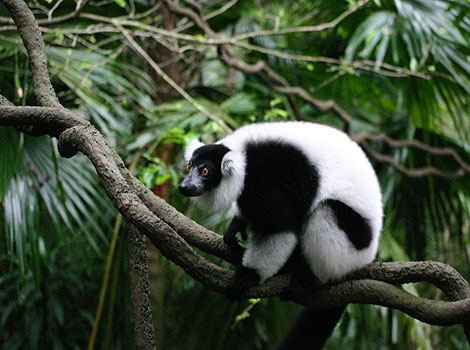
- Variegated Spider Monkey (Ateles hybridus): This primate possesses long limbs and a prehensile tail, typical of spider monkeys. Native to northern parts of South America, they reside in forest canopies. Their diet is diverse, consisting mainly of fruits and leaves. Notably, they have complex social structures and are important seed dispersers in their ecosystems.
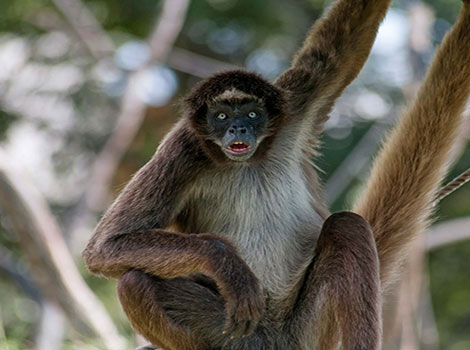
- Vincent’s Bushbaby (Galagoides zanzibaricus granti): A small nocturnal primate, Vincent’s bushbaby has large eyes adapted for night vision. They inhabit East African coastal forests, feeding primarily on insects and fruits. Their ability to make powerful jumps between trees is a distinctive feature.
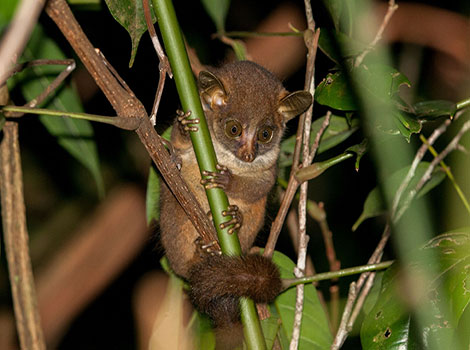
- Von der Decken’s Sifaka (Propithecus deckenii): Found in Madagascar, this primate is known for its striking appearance, including long, silky fur and a long tail. Their habitat includes dry deciduous forests. Their locomotion, characterized by vertical clinging and leaping, is an extraordinary adaptation.
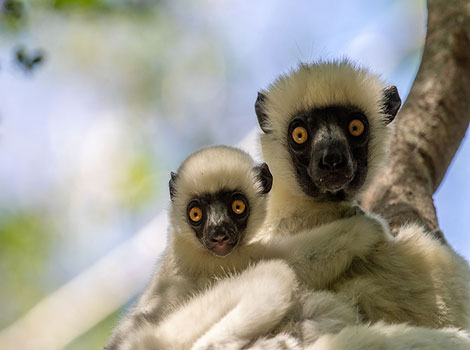
- Variegated Squirrel Monkey (Saimiri sciureus): Native to Central and South America, this primate is known for its bright and varied fur coloration. They are arboreal, living in large troops in forests. Their omnivorous diet and high intelligence are notable.
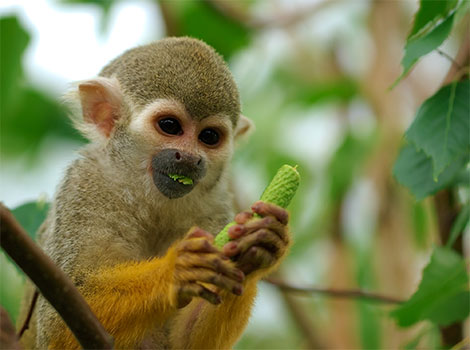
What Rodents Start with V?
Here are the top 5 Rodents that start with V:
- Vole (Various Species): Voles are small rodents with stout bodies, short legs, and a short tail. They inhabit a variety of environments worldwide, from grasslands to forests. They are known for their high reproductive rates and significant impact on agriculture.
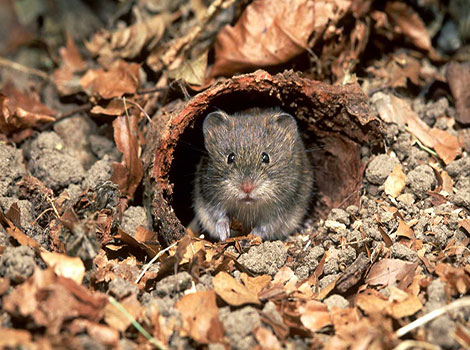
- Viscacha (Lagidium and Lagostomus): Viscachas resemble a mix between rabbits and squirrels, with long ears and bushy tails. Native to South America, they live in rocky areas.

- Vampire Mouse (Calomys venustus): Found in South America, this rodent has a slender body, large ears, and a long tail, but contrary to its name, it does not feed on blood.
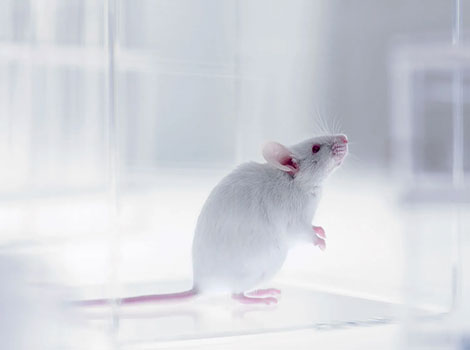
- Vinogradov’s Jird (Meriones vinogradovi): Native to Central Asia, this rodent resembles a large gerbil. Adapted to arid environments, their diet mainly consists of seeds and vegetation.
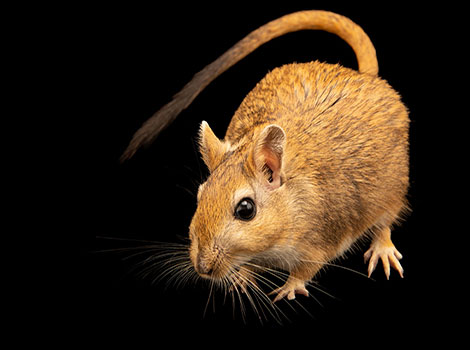
- Variegated Squirrel (Sciurus variegatoides): Found in Central America, this squirrel is known for its varied fur coloration. They are arboreal, feeding on nuts, fruits, and seeds.

What Wild Animals That Start With V?
Here are the top 5 popular Wild Animals that start with V:
- Vicuña (Vicugna vicugna): A wild relative of the llama, this mammal is known for its fine wool. Found in the Andean highlands, vicuñas are adapted to high altitudes with a slender body and light brown coat. They are protected and valued for their wool.

- Vampire Bat (Desmodus rotundus): A mammal with a diet exclusively of blood, found in the Americas. They have evolved unique adaptations for their feeding habits, including heat sensors and anticoagulants in their saliva.
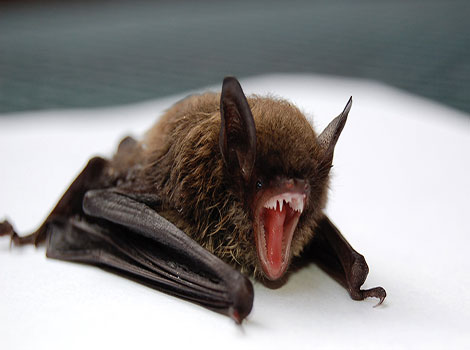
- Vervet Monkey (Chlorocebus pygerythrus): A primate with a distinctive appearance and social structure. Found in various habitats across Africa, they are adaptable and known for their intelligence and complex social behaviors.
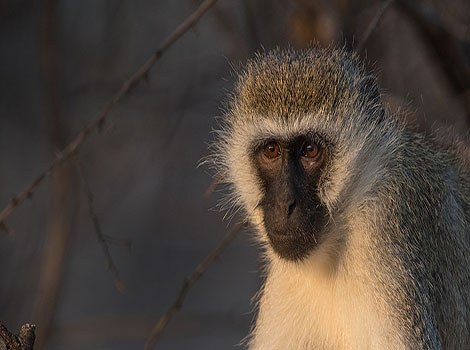
- Vulture (Various Species): These birds of prey are crucial for ecosystems due to their scavenging habits. Found worldwide, they vary in size and habitat but share common features like bald heads and strong stomach acid for digesting carrion.
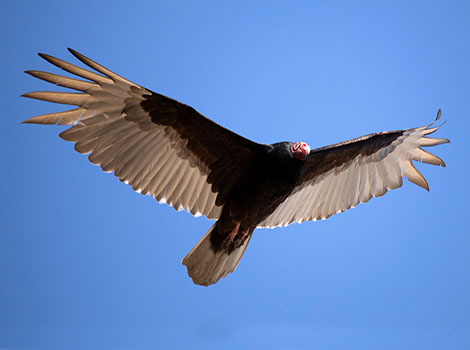
- Vicariant Giant Panda (Ailuropoda melanoleuca): While the giant panda is more well-known, the term “vicariant” refers to a related or similar species occupying a different geographical area. The giant panda, known for its distinct black-and-white fur, is native to mountainous regions of central China. These mammals primarily eat bamboo and are known for their solitary nature and conservation status as a symbol of wildlife protection efforts.
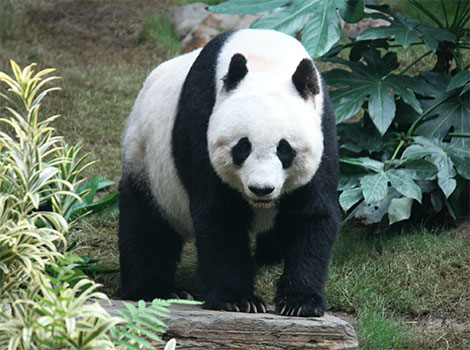
The world of animals starting with the letter “V” is as vibrant and varied as nature itself. From the striking Vampire Bat to the graceful Vicuna, these creatures captivate us with their unique adaptations and roles in their ecosystems. Exploring these animals not only broadens our understanding of the natural world but also deepens our appreciation for the incredible diversity of life on Earth. By learning about and celebrating these remarkable species, we are reminded of the importance of protecting and cherishing the wonders of wildlife.
If you’re searching for animal names starting with a different letter, explore our other comprehensive articles dedicated to animal names.
